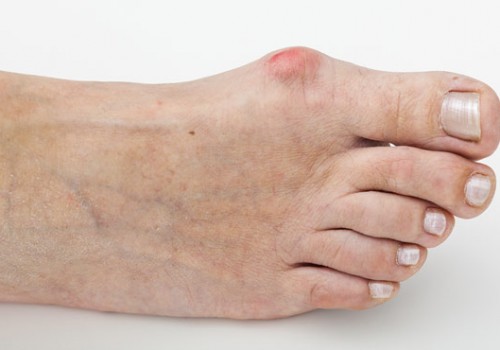A bunion is an enlargement of bone or tissue around the joint at the base of the big toe. The big toe may turn in toward the second toe and the tissues surrounding the joint may be swollen and tender. A bunion is one of the most common big toe problems. Anyone, including children, can develop a bunion; however they are most common in women.
Bunions are a progressive disorder. They begin with a leaning of the big toe, gradually changing the angles of the bones over the years. This produces the characteristic bump which continues to become increasingly prominent and painful.
Bunions are often caused by incorrect foot mechanics. For example, people whose feet are rotated so that the inside edge of the foot hits the ground first when they walk (pronated feet) are prone to bunions. Many people have a genetic susceptibility to developing bunions, and bunions also may develop in association with arthritis.
Treatments
There are early treatments which may ease the pain of bunions, but they will not reverse the deformity itself.
- Change your shoewear, wear shoes that have a wide toe box and avoid pointed toes and high heels.
- Place pads over the area of the bunion.
- Nonsteroidal anti-inflammatory drugs, such as ibuprofen
- Custom orthotics
When is Surgery Needed
Nonsurgical treatment has not relieved pain
When the pain of a bunion interferes with your daily life and activities, it is time to discuss your surgical options with Dr Hausen. There are a variety of surgical procedures which are performed to treat bunions. They are designed not only to remove the bony protrusion, but correct the changes both in the bony structure and soft tissue of the foot. After careful examination and evaluation of your x-ray findings, Dr. Hausen will determine which procedure or combination of procedures will be appropriate for your individual needs.

